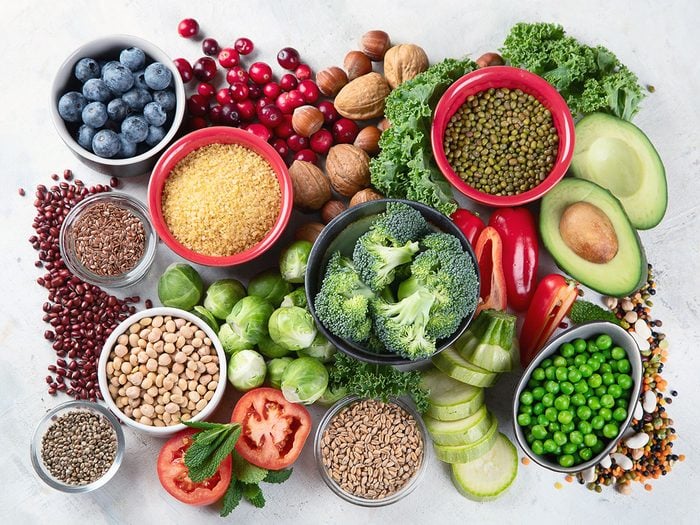
What is the low residue diet?
“Residue” refers to fibre—it’s the undigested residue that bulks up your stool. (Find out if you’re eating enough fibre.) Essentially, if you eat a low residue diet, you are limiting fibre intake, which is found in abundance in fruits, vegetables, legumes, nuts, and whole grains. That said, a low residue diet is a little bit different than a low-fibre diet, says Jennifer L. Bonheur, MD, a gastroenterologist in New York City. Most low-fibre diets recommend limiting fibre to less than 10 to 15 grams of fibre per day; a low residue diet adds on additional restrictions, like limiting milk intake to two cups a day and excluding prune juice, she notes. This is not a weight loss diet, it’s a medically indicated diet that helps those with certain digestive diseases.
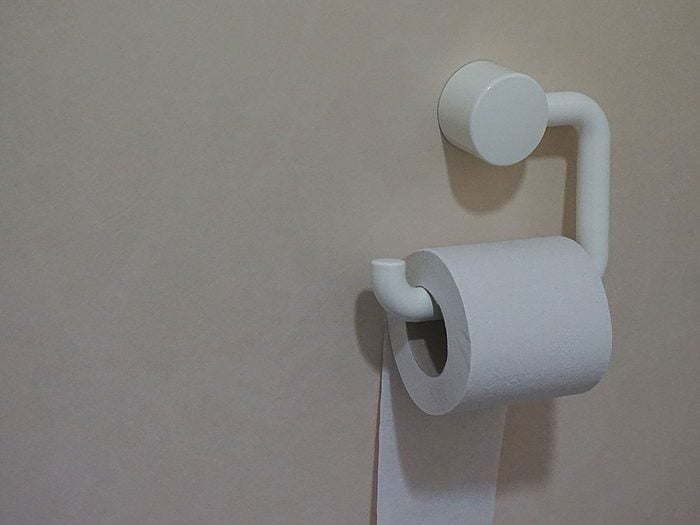
Who is it designed for?
A low residue diet may be critical for someone’s health if they’re recovering from bowel surgery. “The goal is less frequent bowel movements to give your bowel time to rest. Smaller and fewer is the goal during healing,” says Staci Small, RD, the owner of The Wellness Philosophy in Greenwood, Indiana. It may also be useful for someone who’s been diagnosed with an inflammatory bowel disease (IBD) such as a Crohn’s disease or ulcerative colitis. Inflammatory bowel diseases are autoimmune conditions in which the immune system attacks parts of the digestive tract causing pain, bleeding, ulcers, diarrhea, and weight loss, among other symptoms and problems.
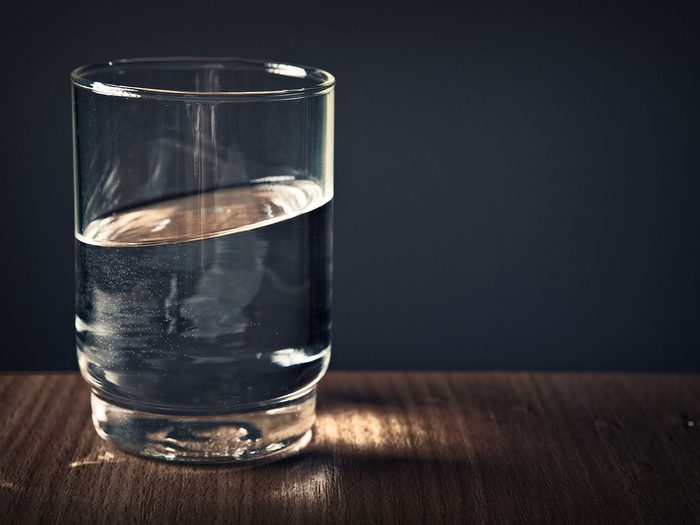
A new way to prep pre-colonoscopy
Rather than sit and starve while you eat chicken broth and Jello before a colonoscopy, researchers found that people who ate low residue diet foods (eggs, white bread, cheese, white rice, and chicken) were less hungry and fatigued before the test than those on the standard “clear liquids” diet, according to a study in Advances in Nutrition. That’s important since the authors note that one reason people avoid this crucial test is that the prep can be so unpleasant. (You’d still have to drink the prep liquid though…) Ask your doctor if this is an option for you. (Psst: See what else you should be eating if you have Crohn’s disease or colitis.)
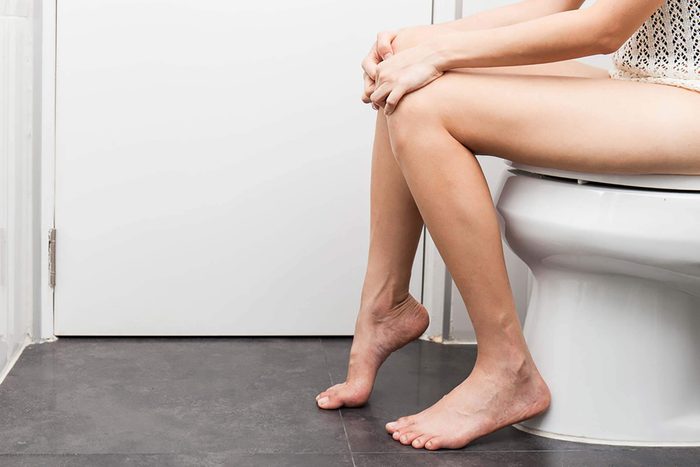
How a low residue diet works
If you’re experiencing a flare-up of symptoms, this type of eating may help you avoid taking too many dashes to the bathroom. “High fibre foods rarely cause the flare, but we often recommend the diet so that we can help reduce the frequency and intensity of bowel movements for these patients,” says Bethany Doerfler, RDN, a clinical dietitian at Northwestern Memorial Hospital in Chicago, Illinois. Fibre, she explains, can have a laxative effect, which is why your goal is to reduce the amount of fibre in your diet—so, steer clear of these high-fibre foods.
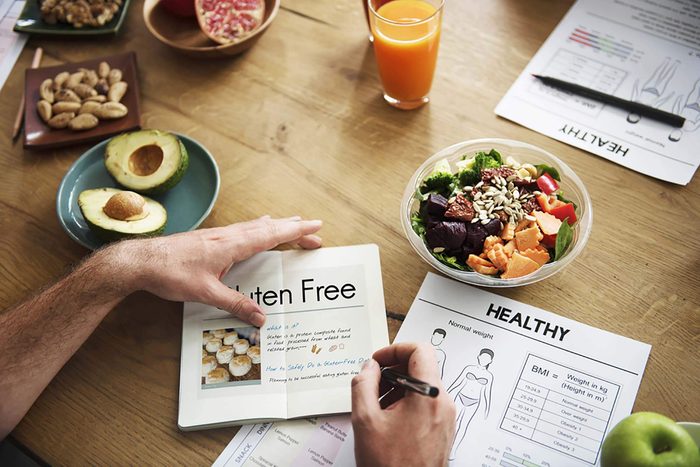
It could make your symptoms worse
The thing about a low residue diet is that it allows for dairy and gluten-containing foods. “In my experience, I find that these proteins often exacerbate symptoms and can make a flare worse,” says Small. If you’re still having GI issues on this diet, you may be better off eliminating dairy and going gluten-free until symptoms subside. Or, your healthcare provider may suggest a different eating plan altogether. That’s why it’s so important not to try this diet on your own, but rather work with a professional who can guide you through the diet and help you get the nutrients you may be missing. (Psst: Check out these weird bathroom habits, explained by science.)
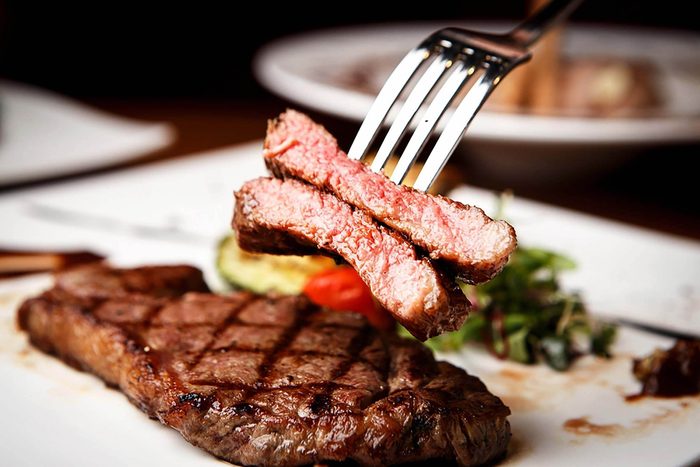
It’s best to avoid certain foods
You already know that there’s a limit for dairy, and prune juice is a no-no, but there are other foods you need to avoid. Dr. Bonheur generally recommends skipping whole grains, nuts (even nut butter), seeds, raw fruit, veggies, the skins of those fruits and veggies, and tough fibrous meats, like steak. Eggs, fish, and chicken are all “softer” proteins that can be tolerated well. And while you are avoiding some foods, you should still do your best to eat healthy foods. “You’re not sticking to a diet of mac ‘n cheese. In the midst of a flare, your body needs well-balanced energy to have the strength to get through it,” she says.
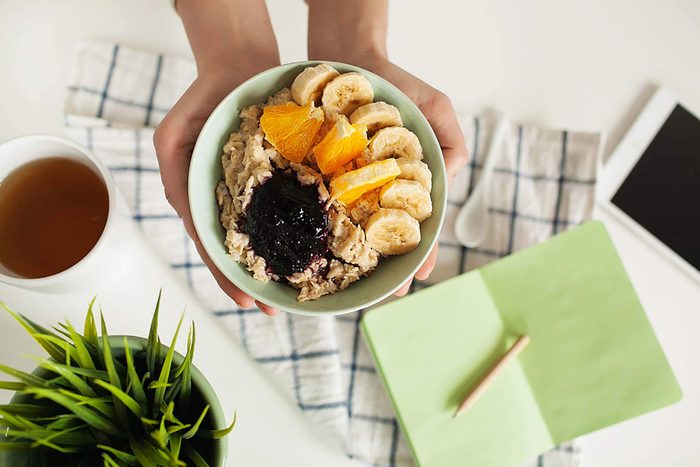
Not all fibre is off-limits
Your doctor may recommend you eat foods like oats, cooked fruit, or ground flax seeds—food you normally do associate with fibre. “Some types of fibre can offer a thickening quality to the stool. We’ll try to integrate these fibres as well when someone has diarrhea or loose stools,” notes Doerfler. (If oats are permitted, try this pressure-cooker apple pie oatmeal.)
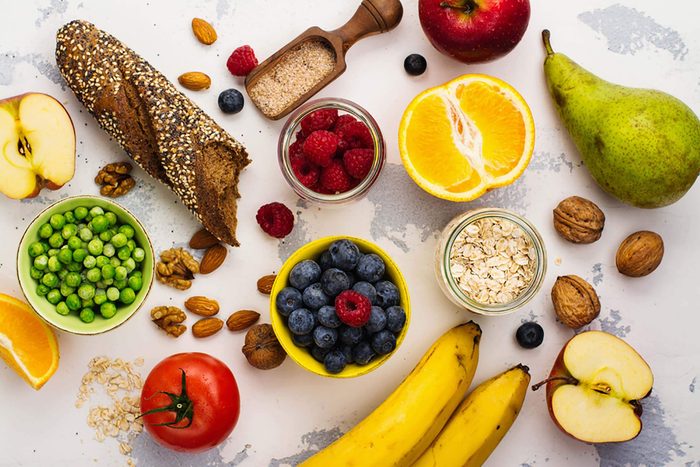
Make fruits and vegetables work for you
Since fruits and veggies have a reputation as being fibre-rich, you may think that a low residue diet means you’re skipping these colorful sources of vitamins and minerals. Not so. “Often when people hear low-residue or low-fibre diet, they often avoid fruits and vegetables, perhaps unnecessarily,” says Doerfler. Instead, she teaches her patients how to modify a food’s fibre so you can still enjoy your favorites. One of her recommendations? Cooking. “Heat acts as a natural digestive enzyme, so cooking them makes them less stimulating,” she says. You may also peel the skin off, focus on “tender” produce (like melons or ripe bananas) in your diet, or grab canned fruits with no added sugar. (Psst: Check out the fruits and veggies you should peel—and which ones you shouldn’t.)
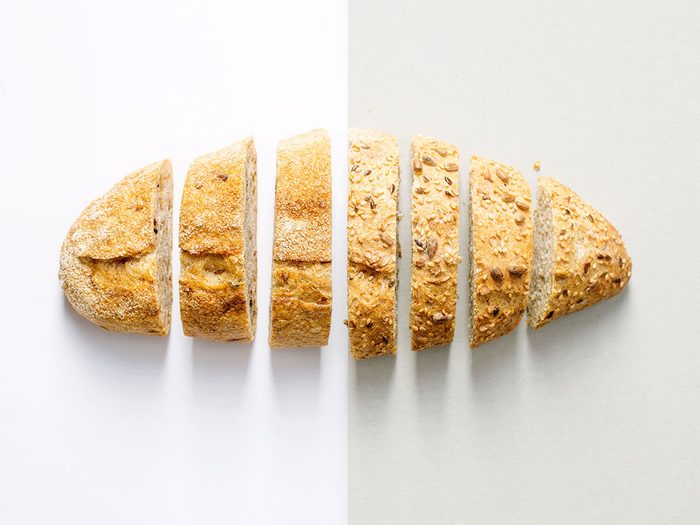
You won’t follow it forever
You know that fibre comes with a host of health benefits. “Fibre has so many jobs. It helps stool pass through your digestive tract, and it grabs onto toxins and ferries them through your system,” says Small. For the first six to eight weeks after surgery, this diet may be helpful, but for the long-term, you don’t want to stay on it. Doerfler notes that she sees patients “stuck” on this type of diet for periods of time, which can be a problem, as that means you’re missing out on the nutritious, fibre-rich foods that are a boon to your health. She points to very specific instances when someone might be advised to stay on it long-term (like if a patient has a very narrow intestine), but that is for you and your MD to discuss. Once digestive symptoms start to subside, your MD will likely suggest you go off of it and slowly incorporate more of those good-for-you fibre-rich foods into your diet again.
Next, check out the foods that are naturally high in digestive enzymes.
